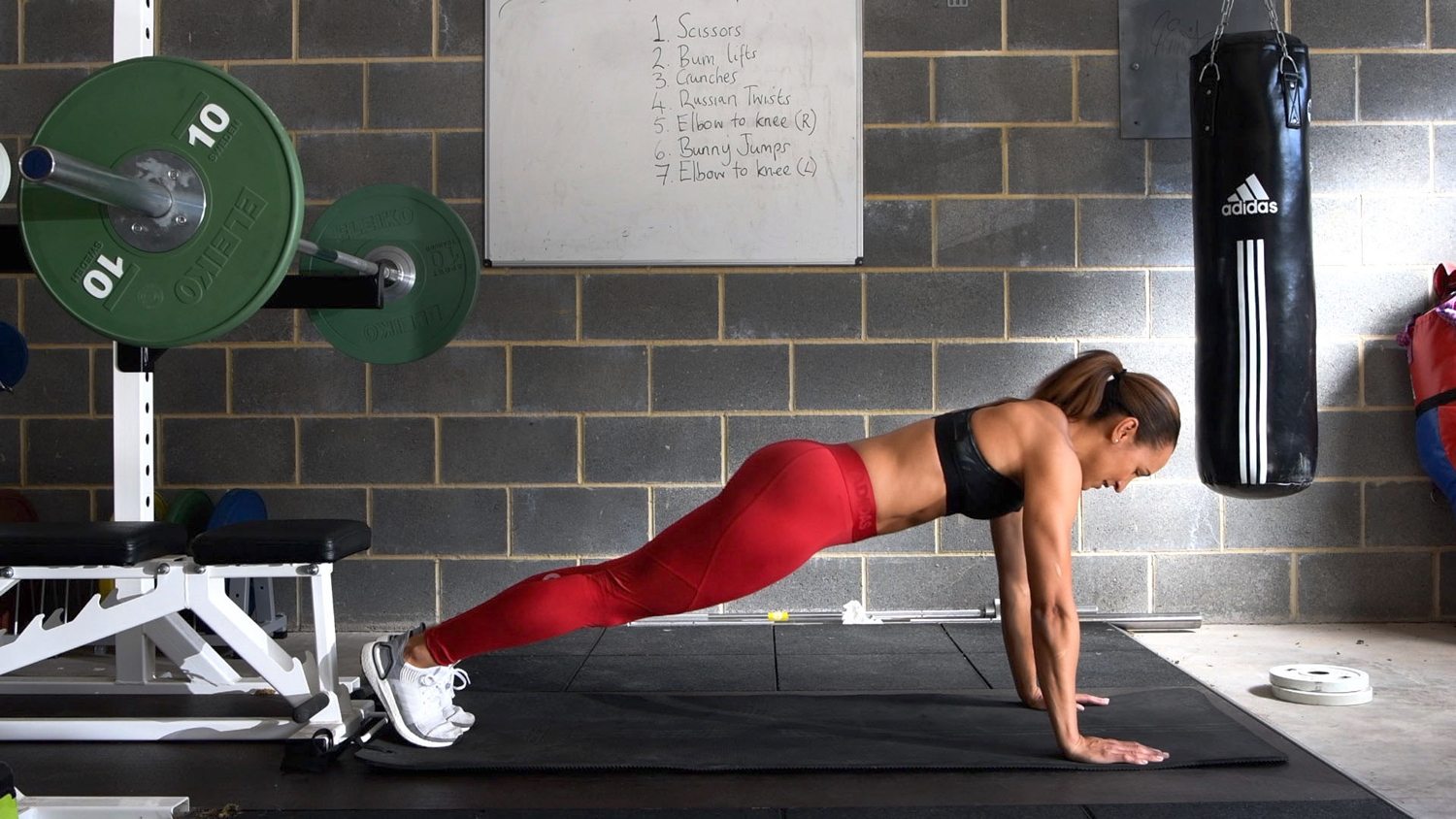Exercise of the week: press-up
3 years ago
Training3 years ago
Training
It's a classic exercise for a reason. But, just why is the press-up so good for us and how can you make it harder or easier? Jessica Ennis-Hill demonstrates in this video masterclass for Jennis Fitness
Everyone knows that the humble press-up is an important exercise in your exercise toolbox, but just how do you hone your press-up style and get it working harder for you.
It’s essentially an exercise in which you lower your chest to the ground using the strength of your shoulders and arms. The key to a good press-up is obviously great form, but once you’ve mastered that, you can add simple variations or speed changes to add intensity.
And the bonus is that it needs no equipment, so it’s super-easy to incorporate into your life.
Oh, and did we mention that press-ups are stonking tough? That all means that knocking out a set doesn’t just take strength, but proper full-on endurance.
Because it engages the whole body, using your bodyweight as resistance. This means that it strengthens and tones a range of large muscles at the same time. Repeated press-ups also raise your heart rate, giving your cardiovascular system some fitness love, too. In fact, a study found that men who could do more than 40 press-ups had a lower risk of going on to develop heart disease.
Get into a plank position, placing your palms on the floor, and your shoulders directly over your hands. Keeping your back straight, draw in your stomach and glute (bottom) muscles. Next, lower your body down to the floor, until your elbows are at right angles to the floor, holding in your core and glute muscles at the time. Finally, push back up again into plank position, making sure you push strongly through your hands. That is one press-up.
Finding it difficult? Try lowering your knees down onto the floor and crossing your feet in the air. Alternatively, you can rest your toes on the floor, keeping your feet parallel to each other. “If you’re new to press-ups, try doing one or two of the full press-ups, and then switching to the modified knee version,” says Jess. “As you get stronger, you can add more full press-ups to your circuit.”
The action of lowering your chest down to the ground is a great way to strengthen your abs, shoulders, arms and chest muscles. But holding your body in that stable plank position also works other large muscles in your body, including the abdominal core, lower back, leg and glute muscles.
Bring your hands together in a diamond position on the ground, with your fingers and thumbs touching. This isolates your core muscles in a different way, and makes the press-up harder. Alternatively, try lifting one foot off the ground so you’re balancing on your arms and one leg during the press-up. Switch the leg that’s lifted for your next set.
 Cycle syncing
Cycle syncing Perimenopause
Perimenopause Perimenopause
Perimenopause Perimenopause
PerimenopauseSign up to learn everything you need to know about CycleMapping, plus how you can live better and feel better through optimising your fitness to you.
This website uses cookies to ensure you get the best experience on our website. Learn more

Sign up for the very latest news on women's fitness, health and hormones, plus be the first to receive exclusive offers and extras